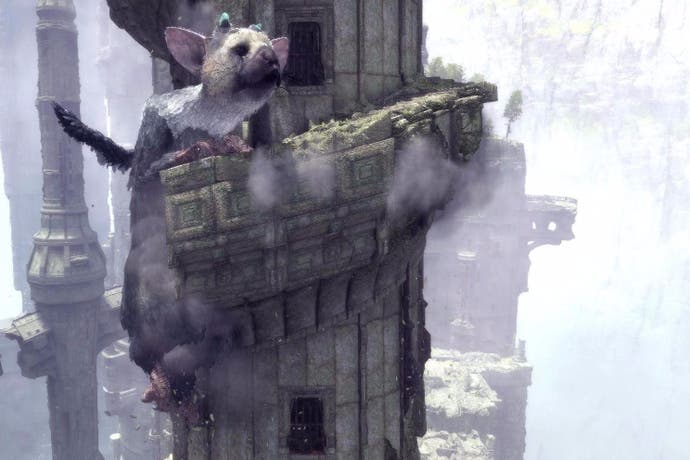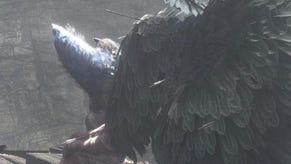Can The Last Guardian live up to expectations?
The catweagle returns.
The short answer, before I lead you on any further, is yes. Despite an impossible amount of hype heaped up over the course of a decade, of hopes sparked by those all-too-intermittent trailers and by the glorious yet dimming memory of Ico and Shadow of the Colossus, The Last Guardian can live up to expectations. It can even surpass them and surprise you with its brilliance, as it did when I sat down to play it for just over an hour last week.
There are, though, a few caveats.
The Last Guardian does not look or play how you'd expect a high profile PlayStation 4 exclusive console game to in 2016. As Wes discovered when playing it at E3 earlier this year, its PlayStation 3 roots frequently become apparent in the occasional murky texture or dipping frame-rate. It's a cumbersome game, too, the camera lurching this way and that, while the controls don't always seem reliable. Neither, for that matter, is Trico, the hulking catweagle you slowly grow closer to, and he's a companion that's consistently disobedient.
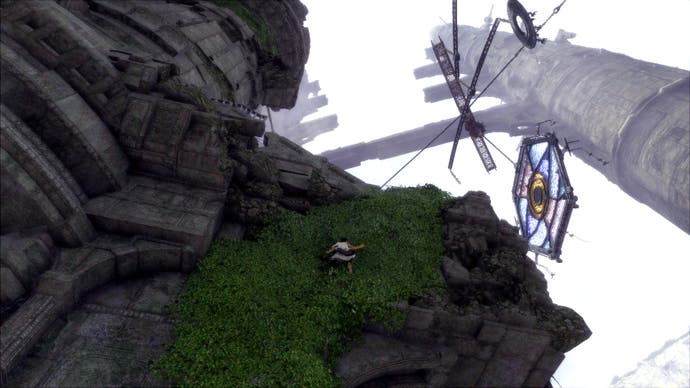
That much, at least, is by design. Your relationship with Trico evolves over time, and the three sections opened up for the purposes of the demo offers three different snapshots of that relationship. In The Last Guardian's opening minutes, Trico's suspect of you and your actions - he'll only eat the barrels that give him energy when you're out of sight. Later, as you tackle the bridge in the set-piece first shown to announce The Last Guardian's arrival on PS4 at E3 in 2015, he's a tentative partner whose bond grows through your shared moments of peril. In the final section, being shown for the first time, the player and Trico work in harmony as they climb their way up a series of towers, Trico acting like a mobile platform as he flies from pillar to pillar.
Even then it's not without problems. Trico often won't move upon your first command, and sometimes it can take three, four or five attempts to get him where you want him. Again, it's partly by design but his stubborn nature can come as a surprise. At a time when so many games remove as many barriers as possible and sometimes even seem to play themselves, here's one that is actively resistant to its players. Few other games would be so daring.
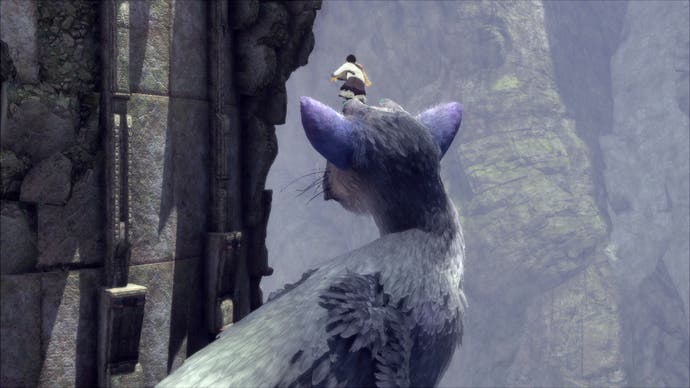
That's why The Last Guardian took me by surprise, I think. That's how it managed to meet my expectations - admittedly lowered having read some of the muted reactions to the playable demo at this year's E3 - and then go on to surpass them. Before sitting down to play The Last Guardian I was worried it'd struggle with the heavy burden of anticipation, and whether it'd be able to pick up a legacy deserted so long ago.
There have been countless games inspired by Ico and Shadow of the Colossus, and in examples like ThatGameCompany's outstanding Journey some have taken that legacy to new and exciting places. I feared The Last Guardian might be outshone by its predecessors' imitators, but it turns out there's a magic to designer Fumito Ueda's vision that can't be replicated. The Last Guardian might feel like it belongs to the same era as its predecessors, but that's no bad thing when it becomes apparent that, despite the many pretenders, there's been nothing quite like it ever since.
Part of that is down to Ueda's famous penchant for 'subtracting design', boiling the gameplay down to its core elements until they're all that's left, but there's something else too. For all the ethereal majesty of these games - the wind whistling through crumbling stonework and an almost spiritual sense of isolation - they're bluntly simplistic. For all the mystery that surrounds them, there's hardly any pretence. There's a basic idea - in The Last Guardian's case, an amalgamation of Ico's emotive hand-holding and Shadow of The Colossus' awe-inspiring scale - and everything else exists in service to it. The partnership you have with Trico in The Last Guardian can be powerfully, uniquely emotional.
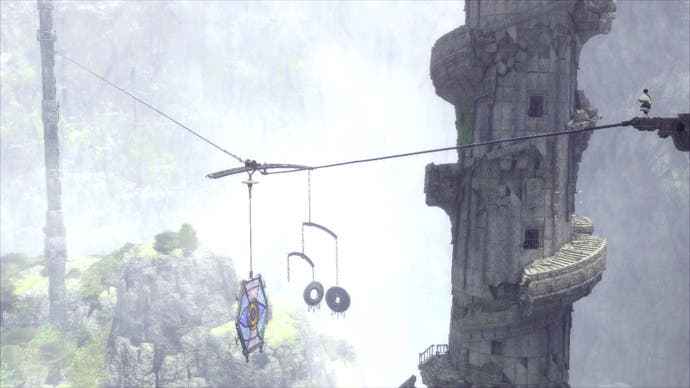
That blunt simplicity would seem to come from Ueda himself. I meet him the day after playing The Last Guardian in Sony's London office, where he sits in an all-white room dressed in understated black and looking much younger than his 46 years. If not exactly evasive in his answers, he seems far removed from the sense of anticipation that's built around this game, or indeed to the affection that's held for his earlier work or the impact it's had on countless subsequent games. His responses, like his games, have been whittled down to the very basics.
"To say that there's no worries at all would be a lie," Ueda says, via a translator, of whether the recent example of No Man's Sky, a game throttled by the sense of expectation surrounding it, gave him cause for concern with The Last Guardian. "There's always a slight worry. But it's nothing major."
"People could look back and say Ico, it was quite an empty game. There are no items, there's nothing much content-wise. You're just holding hands. If you take Shadow of the Colossus, it's just an empty field where the giants are. People could look at it that way. It's something I've done twice before, every time I've released a game. What I believe makes the kind of game I'd like to play myself, I've achieved that with those games, and this time is no different. It's just a question of how many people are out there that are like me, that would like the game."
I'm thinking there should be plenty. The extended development might have dated The Last Guardian before its time, and like its star Trico it's an often unwieldy, stubborn beast. And again as with Trico, it's at times breathtakingly beautiful and like nothing you've seen before. Maybe The Last Guardian's impact would have been greater had it come out, as originally planned, seven years ago, but I'm beginning to think it doesn't matter so much. The Last Guardian feels like a more than worthy successor to Ico and Shadow of the Colossus, and like them its appeal could prove to be timeless.
